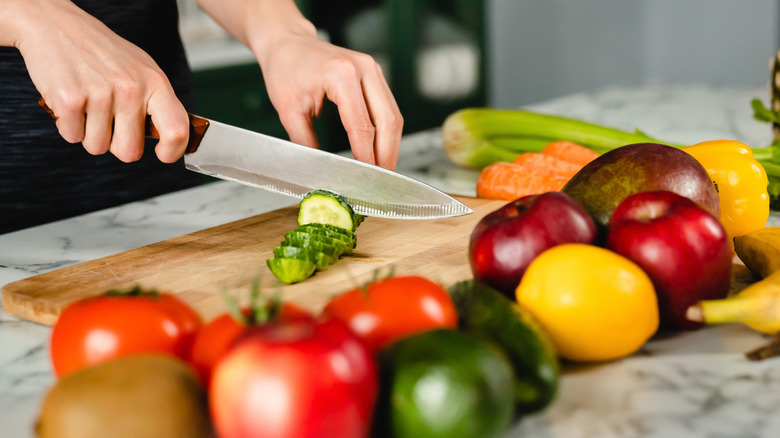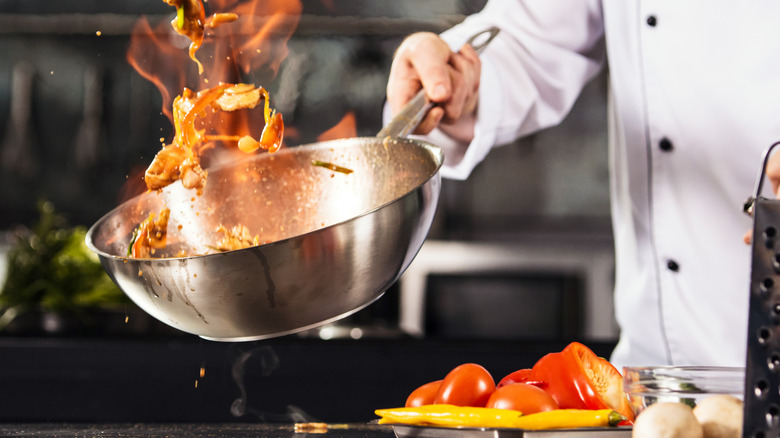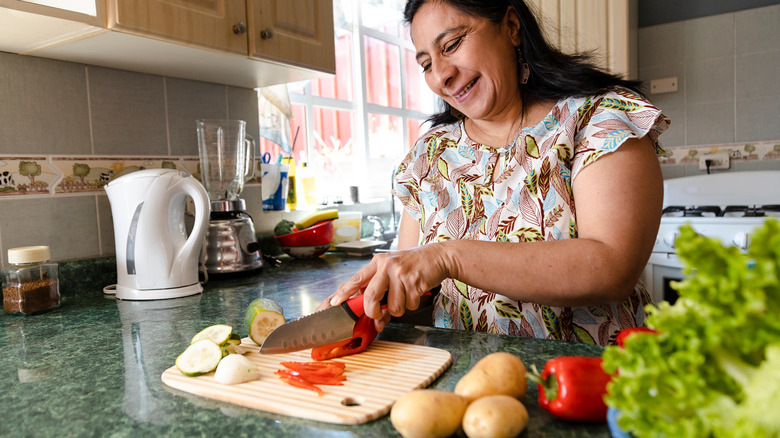This Prep Step Can Change The Way Vegetables Taste
In professional kitchens, when you're told to cut a carrot into a fine dice or julienne a potato, you better listen. That request isn't just a tedious task assigned to line and prep cooks, but a driving force behind the aesthetics of a dish, which is as quintessential to the head chef's vision as how the dish actually tastes (via The National).
But how much does that really matter in the home kitchen, when the end goal is to throw together a quick and tasty meal? What's the deal with recipes calling for potatoes cut into ¼-inch cubes? Will your kids care if you slice the cucumbers into big wedges instead of perfectly even sticks? Does it really have all that much of an impact on the flavor?
Turns out, it actually does. According to NPR, the shape and size of a cut vegetable plays a huge impact on how it tastes. This is a wonderful enigma of food science, but it can actually be traced to a few clear reasons.
Different cuts equal different flavor
Flavor, according to culinary experts, is basically defined by two things: smell and taste (via Science of Cooking). For the latter, we as eaters may assume the notes we pick up derive from the five senses on our tongue. But mouthfeel, as food scientist Ole Mouritsen explained to The Splendid Table, factors into the flavor equation, too. "Suppose we get something which is supposed to be crisp and it's soggy, or we get a piece meat and it turns out to be chewy, not tender — then we actually notice it," Mouritsen shared. Same goes for fresh vegetables.
The specific way a vegetable has been cut determines its lifecycle throughout the entire cooking process. If a vegetable isn't prepped as it should be, it might not react properly in a given heating method and thus, suffer in final texture, flavor, and our overall taste perception. Culinary expert Leslie Brenner told NPR that cutting vegetables allows them to react more strongly with things like an open flame. "The cooking method is going to penetrate more finely cut vegetables more. You're going to get more of a reaction." The outlet also names ingredients like "butter, salt, or a marinade" as ones cut vegetables will absorb more of than whole vegetables or larger pieces. In short, there's a reason why different cuts are more suited for certain recipes, while other cuts might acquire an undesirable flavor.
Different cuts release different chemicals
Apart from how vegetables are cooked or take on other flavors, it's plausible for a raw vegetable cut in two separate styles to taste slightly different. "Every different type of produce is different in terms of the chemistry and how it responds to cutting or crushing," agricultural physiologist Charles Forney explained to NPR.
Forney posits that the minute a knife slices into a vegetable, it triggers specific chemical reactions, which build the more you cut them. That is to say, a pile of diced onions compared to a halved or whole onion will pack more of a punch. Another example Forney gives the outlet is a sliced tomato: the thinner the slice, the more intense the "green notes."
The next time you're prepping ingredients for a stir-fry or stew, take a page out of the professional chef's book and chop, slice, or dice as the recipe calls for. Your future self might thank you for it!


